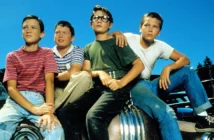She was billed as ‘pari chehra’, the fairy-faced one. Her picture was in every paper. She was indeed young and lovely, her most remarkable feature being her large, magnetic eyes . . . (p. 169).
. . . thus wrote, Saadat Hasan Manto about the woman who was considered as the first female superstar of Indian cinema: Naseem Banu. Many Indians today know her as Saira Banu’s mother, but for connoisseurs of Indian cinema, she was the epitome of grace, the bulbul of tomorrow, and the pulsating horrors of a fiddle. Coming from the home of courtesans, Naseem Banu possessed a natural inculcation of musical and dramatic traditions, something which she deployed in her favourite genres: historical dramas and socialist realism. I recall watching her for the first time in Anokhi Ada (1948), as she played an amnesiac, and was enthralled by her sharp histrionics and readable emotions: that Mukesh song, ‘dil dil se takrata toh hoga’, blows my mind away and reassures me of the theatrical pantheon that Naseem Banu illuminated and redefined. Carving a distinct niche in an industry dominated by women extraordinaire (in the ranks of Durga Khote, Kajjan Bai, and Devika Rani), I think Naseem Banu’s idiosyncrasy lay in her onscreen ability to make audiences cry — and it’s not to imply that others could not — but the sheer simplification of correlational relatability with Banu’s characters renders her superior. Manto’s celebration of her large eyes isn’t an exaggeration. However, I’d like to believe that Naseem Banu’s cinematic stature was beyond the beauty of her skin and was defined by how she acted. Sohrab Modi’s Sheesh Mahal (1950), ergo, becomes an ode to Banu’s acting talents.
Not only does Sheesh Mahal represent her penultimate appearance in a leading cinematic role — she continued to act in some lesser-known films before marking her last (grand) appearance in Nausherwan-e-Adil (1957) — it also becomes an abstract arena that allowed Naseem Banu to openly show-off the character of her histrionics without the purported support of her beauty which was cited as the foundation of her success. The overstretched presence of simplicity in Sheesh Mahal enabled the cinematic universe to focus on Banu’s onscreen demeanour. In the absence of artificial glamour, Banu was uplifted from being a charismatic actor to being a charismatic and sensitive actor. Sheesh Mahal reminiscences of Pukar (1939), where I found her a bit raw(er), but since it was one of the earliest films of Banu, her acting could be excused — however, the distance of nine years accentuates the cinematic development of Naseem Banu and helps us envision the growth of a star. That’s how Naseem Banu’s cultism was established: becoming an icon is one thing; becoming a cult is another. Banu epitomised that phenomenon.
Over these decades, the cult of Naseem Banu has weakened . . . grown invisible, in toto. This reality poses as a public reminder of the hundred gems of Bombay cinema who helped reshape, and reshape, the cinema of tomorrow; and Naseem Banu was, indeed, a prominent figure of this cinematic renaissance. Her appearances in historical dramas still manage to inflate audiences with unadulterated awe, while her socials awaken our emotional sensibilities . . . and while it’s Kamini or Ophelia or Nur Jahan, and the fading stories of characters, it’s the legacy of Naseem Banu that endures. The ‘pari chehra’ of yesterday will remain so . . . untouched, untarnished, as always.
here’s a snippet featuring Naseem Banu and Surendra in ‘dil dil se takrata toh hoga ‘
Movie: Anokhi Ada (1948)
Music by Naushad
Lyrics by Shakeel Badayuni
Playback Singer: Mukesh
Source: Sai Entertainment Pvt. Ltd.



